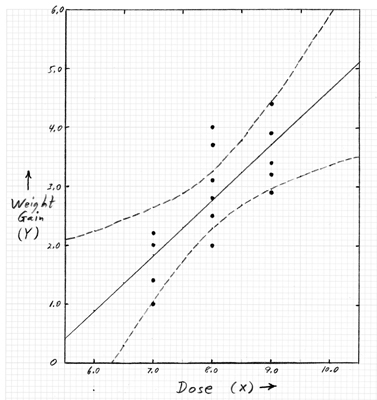Notable Advances in Statistics: 1964-1970
In 1966, R. G. Miller, Jr., published his book Simultaneous Statistical Inference. The multiple comparisons problem was receiving attention as statisticians sought methods to counteract false findings based on data-snooping. By 1970, multiple comparison methods commonly were included in linear models courses.3
This era produced some provocative papers concerning the proper way to deal with data that did not conform to the usual assumptions. For example, researchers explored the merits of robust statistical methods and of the Box-Cox transformation for dealing with heterogeneous variance situations. Other topics of special interest during this period were: nonlinear regression methods, the logrank test for censored survival data, extensions of the Cochran-Mantel-Haenzel method, and variance component estimation.
During the 1960s, mechanical calculators were used for desktop computations because the first handheld calculators utilizing microprocessor chips were not yet available. Computer calculations were performed in a centralized computer center. The statistician would submit data and programs on paper tape, punched cards, or magnetic tape. The "batch" jobs would be placed in a queue and the computer operators would run them in order. The computer hardware and software could not multitask in any practical sense. The printed output, plus material submitted by the statistician, would be placed in a bin for the pick up. It was not unusual for the turn-around time to be 4-6 hours or overnight. December, 1970 marked the first time that computing was an official topic in the annual meeting of the American Statistical Association; the sessions were "Algorithms for Statistical Computation," "Computers in Teaching Statistics," and "Data Handling."
Statistical graphics were a challenge. Although some mechanical pen graphics were available, it typically was more satisfactory to make a figure by hand on graph paper, then have a professional drafting artist trace the figure, create the axis labels, etc., on an appropriate surface for reproduction. Even for classroom display, the instructor would have to draw by hand any data plots.
I (MAH) constructed the figure (on the right) in 1970 to illustrate the Working-Hotelling
confidence band for simple linear regression. Using an electronic rotary calculator,
I calculated the regression coefficients and some points along the bands. Then I plotted
on graph paper, the data, line, and the points on the upper and lower bands. I drew
the bands by eye through the points using a flexible rubber bar that could be bent
to form a smooth curve. The figure, plus data, equations, etc., were combined and
mimeographed to produce a handout for the students. That task, which seems so simple
today, may have occupied me for a morning. My engineering drawing tools have remained
unused in the back of a desk drawer, next to my slide rules, for many decades.
Advances in Stat during Era 6
Next Topic (Annals of MSU during Era 5)
Table of Contents
Last revised: 2021-04-14

